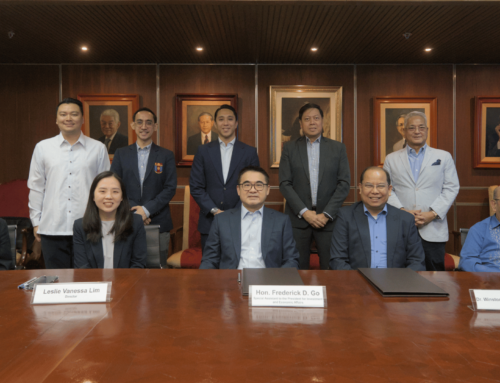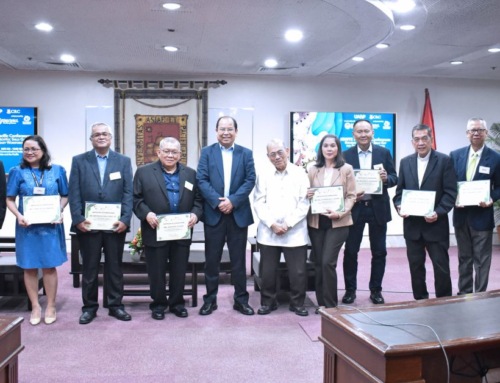Dr. Veronica Ramirez, CRC Director for Operations, presented two research papers on migration entitled, “Maximizing Remittances to the Philippines towards Integral Human Development” and “Foreign Students in Philippine Education: Trends and Challenges.” This was at the 2015 International Metropolis Conference in Mexico City on Sept. 8 and 9, 2015, organized by Metropolis Professional Development (MPD) and the Universidad Nacional Autónoma de Mexico (UNAM). Dr. Ramirez’s participation in Metropolis 2015 was supported by the BPI Professorial Chair on Migration and Overseas Filipino Work. Also at the conference was Secretary Imelda Nicolas, Chairperson of the Commission on Filipinos Overseas (CFO).
MPD is a comprehensive training program designed to familiarize senior decision makers in government, civil society, and the private sector on global migration trends. It also aims to provide information, analysis, and tools on effective ways to manage migration and integration to the advantage of the receiving societies, the migrants themselves, and their homelands.
Dr. Ramirez’s first presentation “Maximizing Remittances to the Philippines towards Integral Human Development” focused on the steady growth of annual remittances from overseas Filipinos, from USD 626 M in 1980 to USD 28.4 Bn in 2014. While this income stream has helped to uplift the lives of Filipinos, much work remains to be done as the beneficiaries are only the families of the roughly 11 million OFWs, compared to the country’s 100 million population. The majority of remittances are spent on household expenses and rent. Among the recommendations, Dr. Ramirez cites expanding OFWs’ investment options and having joint efforts from government and civil society to mitigate the social costs of migration. This talk was part of the panel discussion “Overseas Filipino Workers: Tracking Lives from Launch to Re-settlement.” The session, organized by Dr. Denise Spitzer (University of Ottawa), also featured presentations from Dr. Wardlow Friesen (University of Auckland), Dr. Monica Schlobach (Université de Montréal), and Sara Torres (Gentium Consulting Canada).
In the second paper “Foreign Students in Philippine Education: Trends and Challenges,” Dr. Ramirez pointed out that although the Philippines ranks low among surveys of Asian universities, in academic year 2011-2012 there were 7,766 documented foreign students in the country (compared to the 500,000 foreign students in Asia and the 4.3 million around the world in 2011). The biggest numbers of foreign students came from South Korea, Mainland China, and Iran, and were drawn in particular to Metro Manila and Cebu. Taking courses in the health sciences, English, education, IT, business, and hospitality management, they study in the Philippines as part of study-work schemes initiated by their governments or by the private sector. In addition, foreign students cited reasons for choosing the Philippines as: desire to improve English, established higher education institutions (HEIs), relatively low cost of living, hospitable culture, the influence of friends who are also foreign students, and tourism. Particular challenges are adjusting to Filipino dialects, heavy coursework, and loneliness. To better meet the needs of foreign students, Philippine HEIs should use English consistently in academic work and employ multicultural teaching approaches. This presentation was part of a panel titled, “Migration and Education: The Movement of International Students to Countries in the Asia-Pacific,” organized by Secretary Imelda Nicolas (CFO) and Dr. Yasushi Iguchi (Kwansei Gakuin University). Other presenters were Dr. Francis Collins (University of Auckland), Dr. Binod Khadria (Jawaharlal Nehru University), Yoshinori Oki (Mitsui Global Strategic Studies Institute), Yasutaka Saeki (Global Leadership Program, Japan), and Dr. Huiyao Wang (Center for China and Globalization).





